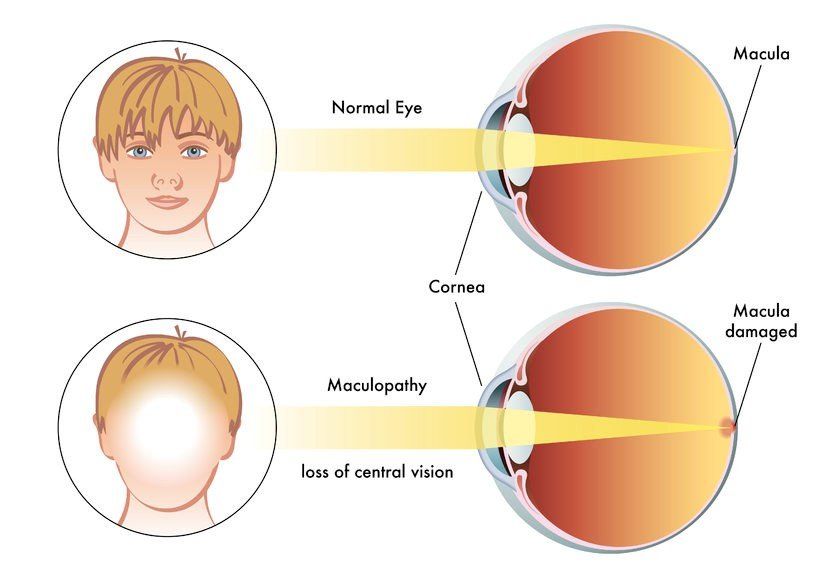Why Is AMD Awareness So Important?
If you’ve been following along on the Eye-Q Blog for AMD Awareness Month, by now you should be pretty familiar with the disease and how it works. In our final macular degeneration themed post, we'll recap a few important tidbits, share some useful prevention methods, and give you some ideas for helping to spread the awareness not just in February - but all year long! If you haven’t yet read our other two posts on AMD, you can
read the first here and
read the second here.
THE FACTS
- According to
Friends For Sight , 1.65 million Americans have Macular Degeneration.
- Age Related Macular Degeneration (AMD) is also the leading cause of irreversible blindness in those ages 65 and older.
- AMD is believed to occur as a result of the eye’s natural aging process when the center of the retina (macula) deteriorates.
- Fatty deposits within the eye called drusen are an important factor in monitoring and diagnosing macular degeneration.
- There are actually two forms of AMD, dry amd - which is the most common - and wet amd.
- Wet AMD is the more advanced form of the disease, characterized by abnormal vessels that grow underneath the retina and leak causing scarring and vision loss.
- Like most eye diseases, macular degeneration often has no symptoms in its early stages until vision is damaged and lost.
- Early detection through a yearly eye health examination is the best way to protect your vision.
- As the disease progresses, symptoms can exist such as a loss of central vision, black or dark spots in the middle of vision, straight lines appearing wavy or distorted, and colors not seeming as bright or differing between eyes.
- Risk factors for AMD include being over the age of 50, having a family history of the disease, smoking, obesity, high blood pressure, diet lacking in fruits and veggies, etc.
- There is no cure for AMD, but treatment options exist to help prevent progression such as anti-VEGF injections, laser treatment, and photodynamic therapy.
PREVENTION IS THE BEST MEDICINE
The best prevention for AMD by far is staying on top of your eye health by having annual dilated eye exams. Your eye doctor can see signs of the disease long before you would begin to notice symptoms from damage.
What else can you do? Unfortunately, many of the risk factors associated with AMD aren't changeable - such as race, age, family history, and gender. However, there are several other changes you CAN make to reduce your overall risk. These include:
- Quitting smoking
- Wearing 99%-100% UV-blocking sunglasses
- Eating a diet rich in colorful fruit and veggies
- Losing weight if necessary
- Staying on top of blood pressure
- Exercising regularly
- Being aware of your risk factors and family history
HOW TO GET INVOLVED
Spreading awareness of AMD is important because although it is a leading cause of irreversible blindness, there are not typically any early symptoms to warn you that you could be losing your sight. This makes education about the disease and its risk factors arguably the most important tool in preventing vision loss.Want to help spread the word? Here are a few ways you can get involved
- Share these posts on social media
- Educate your friends and family about the disease
- Ask your local eye doctor to be a part of an educational presentation for your community
- Visit and support resources such as: The American Macular Degeneration Foundation, Macular Degeneration Association , The Macular Degeneration Partnership





